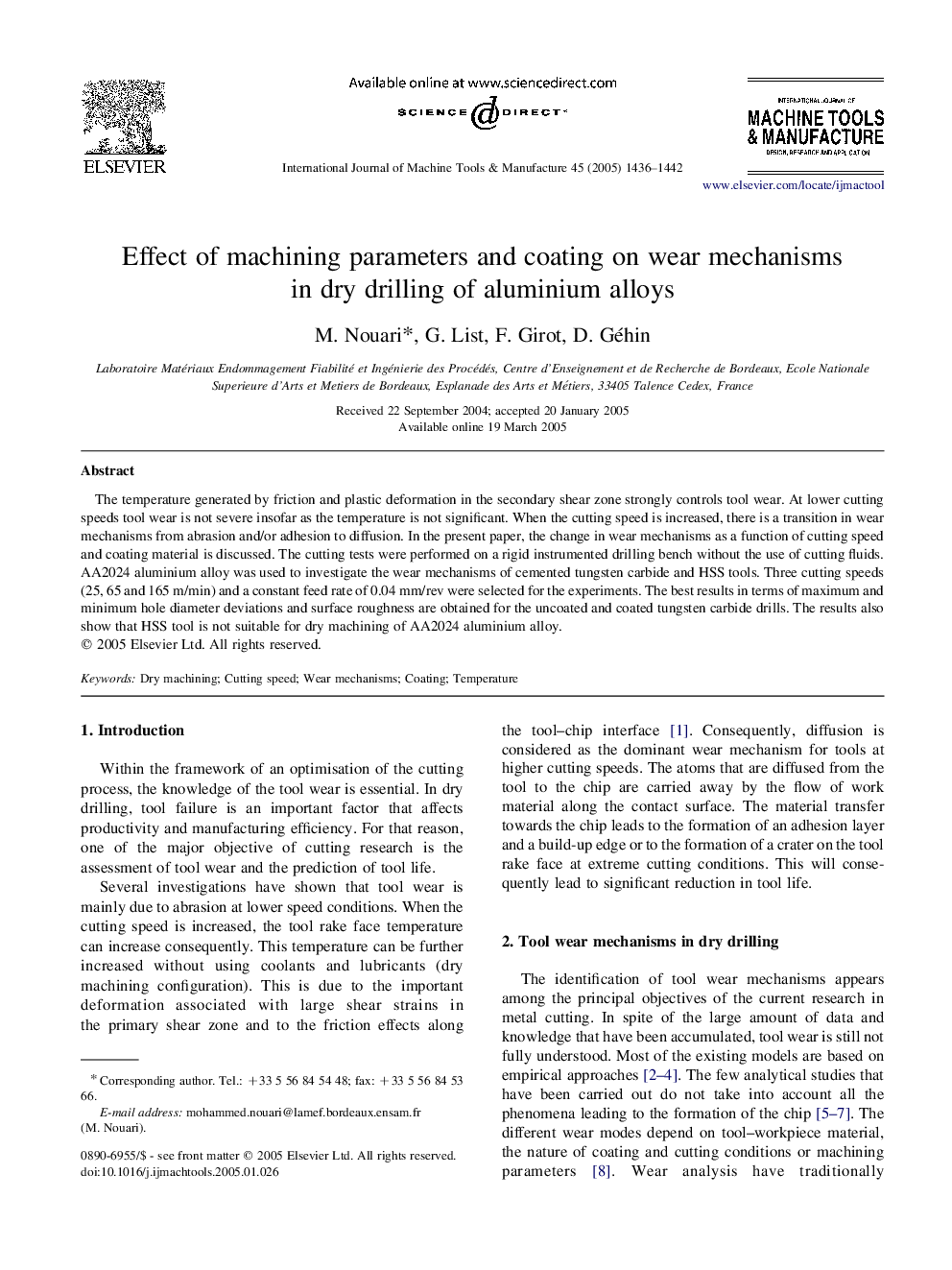| Article ID | Journal | Published Year | Pages | File Type |
|---|---|---|---|---|
| 9705278 | International Journal of Machine Tools and Manufacture | 2005 | 7 Pages |
Abstract
The temperature generated by friction and plastic deformation in the secondary shear zone strongly controls tool wear. At lower cutting speeds tool wear is not severe insofar as the temperature is not significant. When the cutting speed is increased, there is a transition in wear mechanisms from abrasion and/or adhesion to diffusion. In the present paper, the change in wear mechanisms as a function of cutting speed and coating material is discussed. The cutting tests were performed on a rigid instrumented drilling bench without the use of cutting fluids. AA2024 aluminium alloy was used to investigate the wear mechanisms of cemented tungsten carbide and HSS tools. Three cutting speeds (25, 65 and 165Â m/min) and a constant feed rate of 0.04Â mm/rev were selected for the experiments. The best results in terms of maximum and minimum hole diameter deviations and surface roughness are obtained for the uncoated and coated tungsten carbide drills. The results also show that HSS tool is not suitable for dry machining of AA2024 aluminium alloy.
Related Topics
Physical Sciences and Engineering
Engineering
Industrial and Manufacturing Engineering
Authors
M. Nouari, G. List, F. Girot, D. Géhin,
